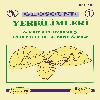Çukurovanın neotektonik jeomorfolojik evrimi
Çukurova havzasında yapılan yeni jeolojik araştırmalara göre, Tetis okyanusunun Erken - Orta Miyosen transgresyonu Çukurova havzası batısında Silifke, Mut ve Karaman dolaylarını kaplamıştır. Sadece bugünkü Toros Dağlarının Balkar -Medetsiz ve Aladağ dolayları bu okyanusun üzerinde yükselen kara parçalarıdır. Bu evreyi izleyen zamanlarda, Toros Dağlarının duraksamalarla yükselmesinin sonucu olarak, esas itibariyle Alt ve Orta Miyosen, üst Miyosen, Pliyosen ve Kuvatcrner'e ait 4 ana evre halinde Akdeniz sulan güneye doğru çekilmiştir. Bu her yükselme evresi sırasında, Toros Dağlarının güney eteğinde ve o zamana ait denizin kıyı çizgisi kuzeyinde farklı aşınım yüzeyleri meydana gelmiştir. Yazarın jeomorfolojik araştırmalarına göre, Çukurovada herbiri kendisiyle yaşıt deniz düzeyine göre kıyı ovaları halinde gelişmiş bulunan bu azınım yüzeyi şeritleri de yanyana basamaklar halinde uzanırlar. Örneğin, en eski ve en yüksek olan Alt ila Orta Miyosen yaşlı ilk basamak, esas itibariyle Kuzgun Formasyonunun Catalan, Kuzgun ve Tarsus kuzeyi arasındaki kuzey sınırı boyunca uzanır. Geç Miyosen yaşlı ikinci basamak ise Handeresi Formasyonunun kuzey sınırı boyunca uzanmaktadır. Kaliş formasyonları ile kaplı erken Kuvaterner sekilerinin oluşturduğu üçüncü, yani son tepelik basamak ise Tarsus Adana yolunun kuzeyinde uzanır. En güneydeki 4. ve en alçak şerit ise bugünkü kıyı çizgisi kuzeyinde uzanan alüvyal delta ovasıdır. Yani Çukurovada görüldüğüne göre, her jeomorfolojik arazi kuşağı, kendisi ile yaşıt bir kıyı çizgisinin kuzeyinde o çizgiye uyumlu olarak gelişmiş ve kuzeye doğru, kendisinden bir evre önceki jeolojik formasyonlar üzerinde depozisyonal veya erozyonal olarak genişlemiştir.
Neotectonic geomorphological evolution of Çukurova
According to the recent Geological Studies, the Early to Middle Miocene transgression of the Tethys ocean had covered the Silifke, Mut and Karaman areas in the west of the Çukurova Basin. Only at Bolkar - Medetsiz and Aladağ areas of the recent Taurus Mountains were rising above this ocean. Following this phase, as the result of different phases of uplift of this Mountain chain, the Mediterranean Sea begun to recced hack towards the south during the principally 4 succesive main phases of Lower to Middle Miocene, Upper Miocene, Pliocene and Quaternary. During each of these phases different erosional surfaies had developed. That is they were extending along the southern foots of the Taurus Range. According to the geomorphological researches of the author, in Çukurova the erosional surfaces which were developed according to the corresponding sea -levels had developed and extended as succesive step like strips of coastal plains. For example, the oldest and highest first step of Lower to Middle Miocene age were extending principally to north of the northern boundary of Kuzgun formation, between the recent towns Catalan, Kuzgun and north of Tarsus. The second step of Late Miocene age were extending at along the nothern boundary of Handeresi formation. The third step of the earlier Quaternary terraces with caliche formations is the last hilly area which extends at along the north of the Tarsus Adana road and the fourth and the southern belt that is the modern alluvial delta plain are Pound in the north of the recent coastline. With other words in Çukurova each gemorphological land strip were developed at the north of a corresponding coastline, and depositional or erosionally enlarged northward principally on the geological formations of one phase earlier period.
